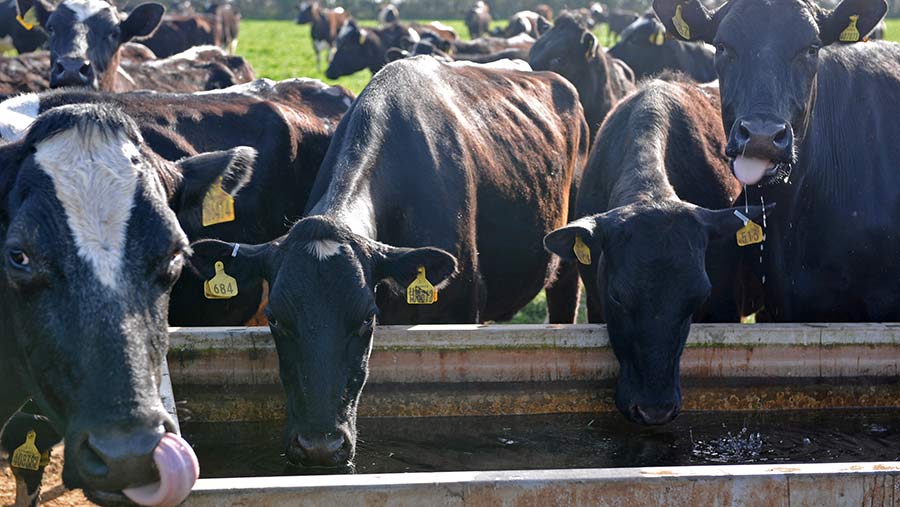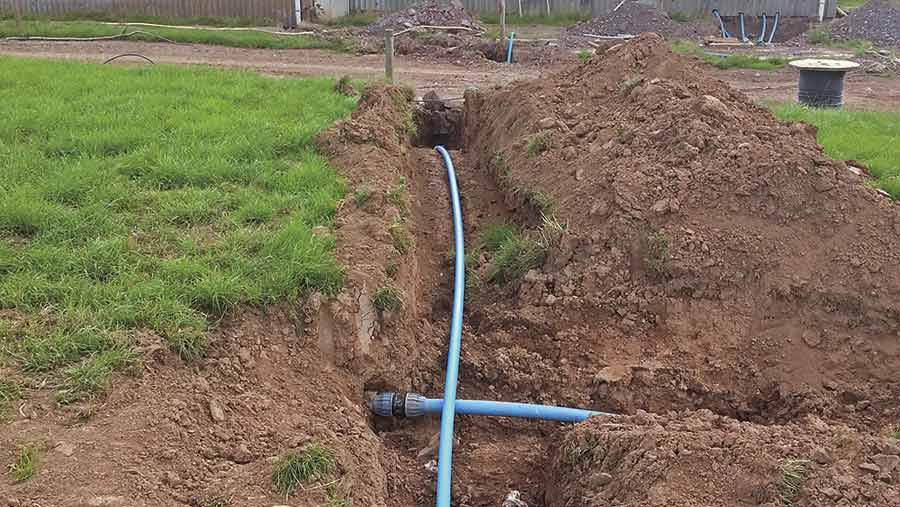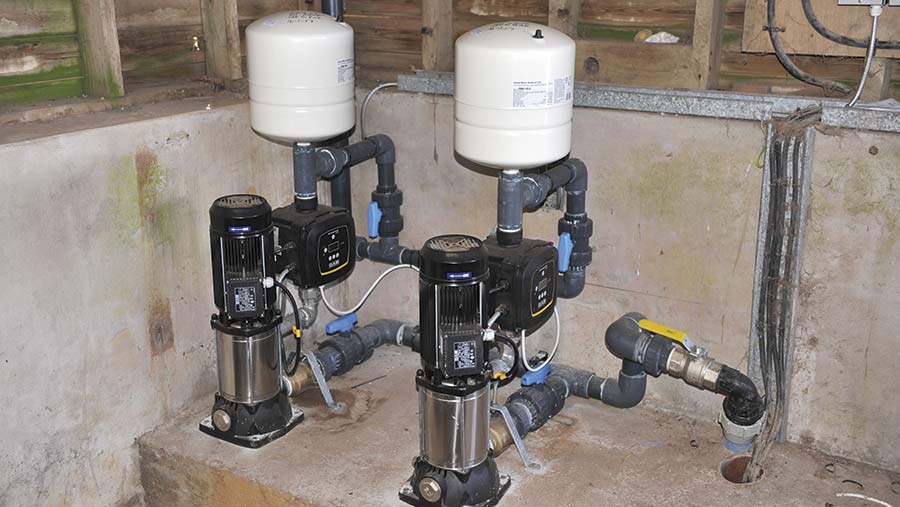Guide to planning water requirements on your dairy farm

Dairy enterprises contemplating expansion can save money by carefully planning the water supply needs of a larger herd before putting infrastructure in place.
We spoke to engineering consultant Nick Fordham and Dr Pat Winterbottom who run Pembrokeshire water engineering company Penstar, about assessing dairy water requirements and maintaining water systems.
How much water?
They explain that peak demand is central to the calculation for the herd’s drinking water requirements.
Farmers often overlook the additional peak flow demand associated with herd expansion and, once infrastructure is in place, it can mean costly changes and unwanted disruption to put this right.
An adequate and constant supply of good-quality drinking water is crucial for maximum milk production and to comply with animal welfare requirements.
Clean water is also needed in large quantities for cooling milk and washing down the parlour; the plate cooler uses around 1.69 litres of water for every litre of milk produced.
See also: A guide on how to harvest rainwater on a farm
If the diet is substantially fresh pasture then 80-90% of the water intake can come from pasture consumption, but it is still important to plan for peak demand on a hot summer’s day when dietary intake could be mostly silage and concentrates.
On a hot summer’s day, whether the cows are on feeds high in dry matter or grass, they will need a lot of water.
The total water needs per cow per day can be up to 170 litres so this is the figure that should be considered when assessing water supply.
When the air temperature is lower the cows will need less but it’s important that the system can cope with the needs of cows in the worst-case scenario. No farmer wants to see cows going short of water.
In addition to drinking water demand, the milking parlour can use around 70 litres for every cow a day.
Pipe sizes
Thought must be given to the distribution of water and the diameter of pipes.
If the pipe size is too small, water will be slow to move around the system and it is unlikely to reach troughs at the furthest points.

The benefit of using a 63mm pipe is that it allows water to reach the furthest troughs
Penstar recommend a minimum pipe size of 32mm but says that in extreme cases there is benefit in using 63mm.
There are many cases where farmers have opted for three-quarter inch pipes to save money, only to realise it is a false economy.
“They might save between 15p and 20p a metre on pipe but they won’t get the flows of water they need at peak times,’’ says Dr Pat Winterbottom.
Pressure will be less in smaller diameter pipes because there is increased friction between the water and the inside of the pipe.
The faster water travels through a pipe and the further it travels, the greater the resistance towards the end of the pipe.
Type of systems

A system must not be over-pressurised as this can result in leakage
A loop line is considered superior to a main line system, mainly because it is cheaper.
When a loop line system is created, water troughs can be placed either above or very close to the pipeline, minimising the short piece of pipe of smaller diameter leading to the trough valve.
Mr Fordham recommends using full flow valves that are built for purpose. With big herds, it is not just the trough size that is important but also the velocity in pipes.
Upgrading the system doesn’t mean that the existing network of pipes must be removed. Dr Winterbottom advises the installation of a ring main to connect to the system at key points.
This will increase water pressure at all points in the system. If the flow through any pipe can be halved, the pressure drop is reduced by three-quarters and troughs will therefore fill quicker.
A frequently overlooked fact is the altitude of pump relative to fields. One bar pressure is needed to overcome every 10 metres lift in altitude.
Pumps should also be gravity fed, and should not draw from below-ground storage.
Pump size
Pump size needs to be given as much consideration as pipe diameter but installing the biggest available pump is not a solution.
It is not only expensive to over-specify – a system can be over-pressurised and this can lead to leakage and other problems.
The electrical stress on the motor and the mechanical stress on the pump itself are far greater at start-up than during continuous operation.
Therefore, using a variable speed drive with a slower start-up avoids the risk of premature failure.
It is not cost-effective to have a pump that is running flat out when it is not needed and it adds to wear and tear.
If creating farm tracks is included in the expansion plan, it is advisable to install water pipe lines before the subdivision of fence lines or tracks are laid.
Trough size
Trough size is important for access, rather than water storage. For a herd of 400-plus cows two water troughs per paddock is the ideal.
Trough size should be half the one-hour demand, therefore a 400-cow herd needs 5,600 litres an hour. Based on this figure, the water trough capacity in each paddock should be at least 2,800 litres, two troughs each holding 1,400 litres.
Mains water on pasture-based dairy farms is an expensive option; the cost of drilling for bore water can normally be recouped within two years through savings on mains water consumption.
Once a farm has control over the water supply, pumps, reservoirs, looplines and water troughs can all be set up.
It also allows for the installation of dosing systems for minerals and bloat treatment.
Measuring the rate of water flow
Although the experience of an engineer is essential for calculating water requirements, there is a simple procedure farmers can do to measure the rate of water flow:
- Mark the water level on the side of the trough
- Bucket out a known volume of water (eg: 10 x 20-litre buckets) while holding the ballcock up
- Push the ballcock right down and time the trough refill back up to the mark
- Compare the measured flow rate with the desired flow rate (eg: 200 cows drinking 14 litres/hour = 2,800 litres/hour flow required. To get litres/minute, divide this by 60. In this example the water flow required is 47 litres/minute. It should take four minutes 15 seconds for 200 litres to refill.
Top tips
- Plan water requirements ahead of future development
- Document a plan for the farm water supply so you and everyone else will know where the pipes and taps/valves are
- Check legal requirements relating to non-return valves and the protection of pipes
